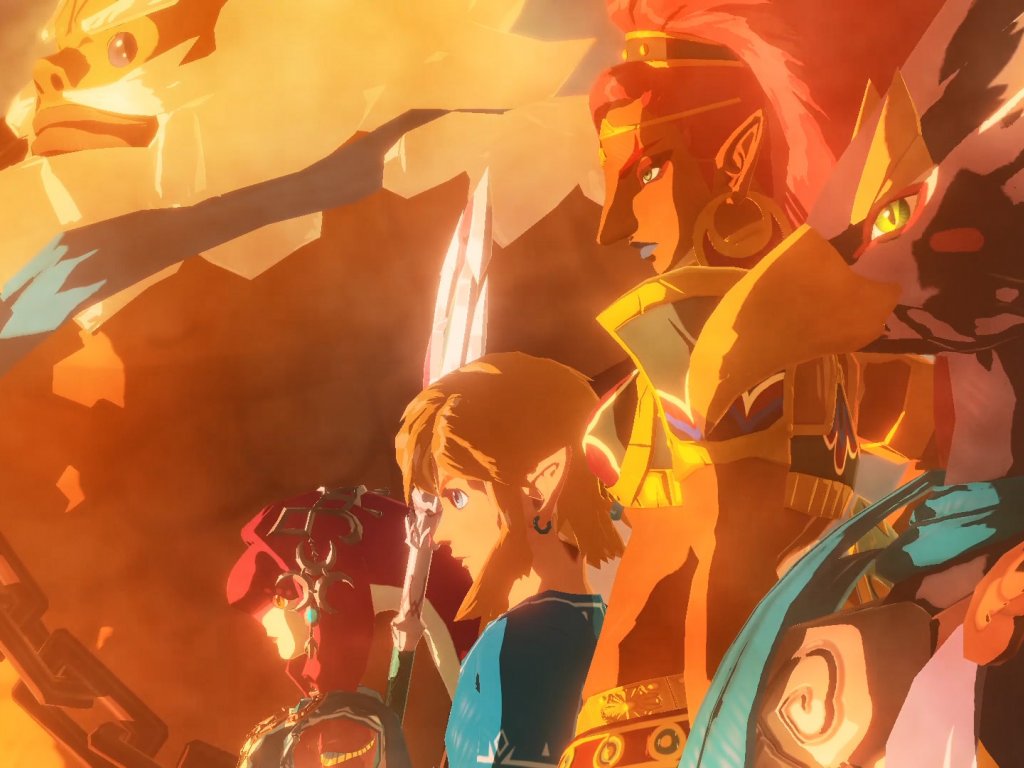Hyrule Warriors: Age of Calamity, our tips for getting started

The best structures
Hyrule Warriors: The era of calamity has a very interesting micro-management component, represented by the map of Hyrule in which numerous icons will begin to flock right away. Some are main and secondary missions playable directly on the battlefield, others are tasks that are solved by pressing a button to deliver some items, and still others are structures that you can use to customize the game and the characters. At some point you will have to choose which assignments to give priority to because you will probably not be enough materials in your possession and you will have to get more. In this sense, the most useful are certainly the stables - which allow you to occasionally purchase rare materials and ingredients - and the upgrades of the structures. Here is our tip number 1: immediately unlock the ones that guarantee you the discounts on goods and level ups, because the rupees in Hyrule Warriors are never enough, and wasting them to recolor the costumes of Link to Tinte d'Ori is not exactly the best strategy of all.Weapons, brands and mergers
You will find tons of weapons in chests and at the end of missions. In most cases, the weapons you will find will be suitable for the characters you are playing, so keep this detail in mind already. In general, you will spend a lot of time in the blacksmith's workshop combining different weapons through fusion: you basically choose one as a base and consume up to five others to increase its power. Depending on the level of the weapons consumed, the basic weapon will gain more or less experience and will increase in level in turn, for a maximum - at least initially - of 20 levels. If you have a lot of weapons at your disposal of a lower level than the base one, combine them with each other, because the result will make the weapon you want to upgrade much more experience. The fusion serves not only to improve the attack value of a weapon, but also to give it new marks, passive bonuses that appear randomly in the weapons you find.You can make several tests and evaluate the result before melt one or more weapons, but always keep in mind that at some point in the game you will unlock upgrades for the blacksmith that will allow you to remove one or more marks from a weapon. This will allow you to customize weapons: for example, you could forge one that increases the finding of monstrous materials and ancestral materials for your farming sessions. In general, try to exploit the strengths of the characters. For example, Impa uses strong attack a lot to absorb symbols and enhance his special attack: try to forge a weapon with marks that at least increase the damage dealt by his strong attack, that dealt by his special attack and maybe even the regeneration of the special attack indicator. You can easily complete Hyrule Warriors without spending too much time on this aspect of the game, but the brands will give you an edge in the most challenging stages.
Strategic kitchen
Once the farming cooperative is unlocked from Mabe, make sure you stock up on eggs every time you return from a field mission - they're cheap and particularly useful as you need 3 to make a Boiled Egg. This dish grants + 3% experience points in the next mission you play, and we advise you to always prepare it to avoid spending too many rupees in the boot camp when some characters will inevitably lag behind the others. By completing the cooking tasks you will learn new recipes, for example the Omelette that grants 10% more experience points. Also, there are some power-ups that will allow you to cook up to three different dishes before starting a mission. This means that you could combine your experience point bonuses to get up to an additional 20% total. However, some dishes will allow you to also increase the number of rupees collected, so there are different combinations to experiment that will satisfy your needs.The secondary characters
As you have understood, you will have to do a lot pay attention to the levels of the characters, especially if you play on difficulty above Normal. The main missions of the campaign will often force you to use one or more predefined heroes, so some will lag behind with experience points and you will have to resort to the training camp or side missions to increase their level. In this sense, there are some characters that you can overlook because during the campaign you will play them little or you will not play them at all. The first is Castonne: although it unlocks in the third chapter, you will be forced to play this funny little tree armed with maracas for only a couple of missions.There are two other fully optional characters that you can unlock before the credits roll. The Radiant Fairies will join you after defeating them in the four corresponding side missions: they are actually four characters in one, as the personal action changes the Radiant Fairy in the field. The other character is the monk Myz Kyoshia, which is obtained by completing three assignments and then the combat mission in which you will face him face to face. As they are optional, these two characters will never be mandatory during campaign missions, so you can neglect them a little more than the others.